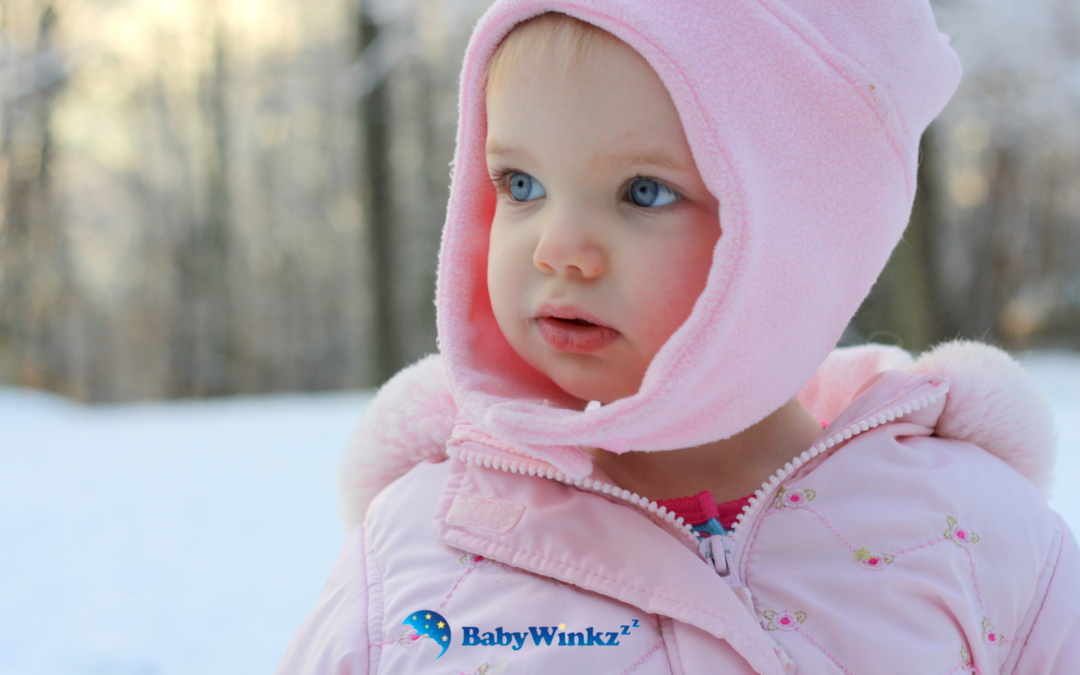During the cold months, ensuring your baby’s sleep safety is of utmost importance. From navigating the best room temperature to selecting the most suitable bedding, we will explore the most important aspects of sleep safety throughout the winter.
Room Temperature
The safest room temperature for your baby to sleep is 16-20°C (60.8-32 °F). I always say that the babies I work with end up adjusting to what is comfortable for them and can then get great quality sleep. Keep in mind that this is a guideline. From my experience working one-on-one with babies I have found 19-20°C is often the sweet spot with the correct adjustments to bedding and clothing. If you are unsure of the temperature in your babies room and would like to monitor this I always recommend to my clients using a room thermometer. I use the Gro Egg for room thermometer (this is my preference, I have no affiliation with them!). If not I also suggest a thermometer specifically designed for accurate temperature readings, as I’ve noticed that some video/audio monitors can be slightly inaccurate.
While you might be wanting to wrap up your baby for warmth, it’s crucial to recognise that overheating can elevate the risk of SIDS (Sudden Infant Death Syndrome). Never use hot water bottles in any baby sleep space. They can make your baby overheat and research advises that its safer for your baby to be cooler than too hot.
Bedding
The safest sleeping environment for your baby is in their own separate sleep space. They should be sleeping on a firm and flat surface free from any obstacles. I would suggest opting for a cot or Moses basket.
If you are using sheets or blankets, opt for lightweight options and avoid thick or fleecy alternatives. If you want to increase the warmth, add a lightweight blanket or layer of clothing. A high proportion of infants who die as a result of SIDS are found with their head covered by loose bedding. To reduce this risk you must remember to tuck in all sheets and blankets firmly below the shoulders.
For this reason, I always recommend a sleep sac over blankets. If you are using a sleep sac, don’t add extra blankets on top. A great way to adjust the warmth is by opting for varying togs that you can change in accordance with different temperatures. It’s essential to ensure that the sleeping bag is well-fitted. This will prevent your baby from wriggling down which could increase the risk of SIDS. I always tell my clients to follow the manufacturer guidelines when it comes to the sleep sac and ensure it’s a safe sleep recommended one.
Click here to see my free Baby Dressing Guide along with other useful resources.
How can I check if my baby is too hot or cold?
Check your baby’s chest and the back of their neck to make sure that their skin doesn’t feel clammy, sweaty, or cold to the touch (their hands and feet will always feel cold!). The skin being warm is fine, if it feels sweaty or clammy it means they are too hot so remove a layer of bedding or clothing. If the skin here is significantly cold be sure to check the room temperature and adjust their bedding accordingly.
Remember that babies who are unwell need fewer, not more layers. If you are concerned about your baby being unwell call 111 (for UK residents) or contact your health provider.
This blog is written in accordance with advice provided by The Lullaby Trust.
See Previous Blog: Getting your child to sleep on Halloween
See Following Blog: Debunking the perfect sleep myth for your baby

